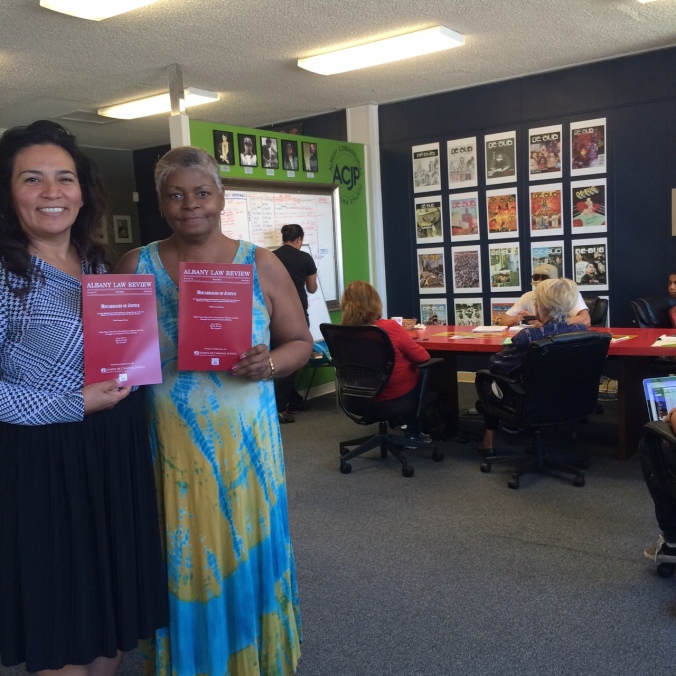Special thanks to Andrew Davies and the people at Albany Law Review for publishing our co-authored piece for their law journal entitled, “Make Them Hear You: Participatory Defense and the Struggle for Criminal Justice Reform.” It was humbling and inspiring to share our story of families finding innovative and powerful ways to fight for their lived ones freedom in the context of the research and history articulated by our co-authors Janet Moore of University of Cincinnati Law School and Marla Sandys of Indiana University. Janet and Marla hung out with us too when we were building with our partners in Lexington, Kentucky.
And here is a photo of Becky and Gail, two pioneering moms and participatory defense organizers holding up the recently released Albany Law Review at our headquarters at Silicon Valley De-Bug. In the background our weekly participatory defense meeting is starting up, with Cecy facilitating. It is a meeting Gail and Becky helped start years ago as they both fought for their own sons freedom. Now they facilitate weekly participatory defense meetings for other families. And hopefully, a path that they carved out so naturally, may pave a way for other communities to also know how they can impact the court system. Because while it is an honor for our approach to enter the discourse of legal scholars and law schools, and hope that it helps recalibrate the legal field to be more inclusive in its search for justice, ultimately this work is still about what it started as — families sitting around a table seeing how they can bring their collective power, intelligence, and community resources to change the imbalance in the court system and free their loved ones. Just like how Becky and Gail taught us to do.




